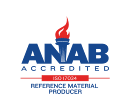References
U.S. Pharmacopeia General Chapters: <61> Microbial Examination of Nonsterile Products: Microbial Enumeration Tests. Rockville, MD USP34-NF29, 2011
U.S. Pharmacopeia General Chapters:<62> Microbiological Examination of Nonsterile Products: Tests for Specified Microorganisms. Rockville, MD USP34-NF29, 2011
U.S. Pharmacopeia General Chapters: <60> Microbiological Examination of Nonsterile Products Tests for Burkholderia Cepacia Complex.
British Pharmacopoeia Commission Test for sterility. London, UK:British Pharmacopoeia Commission;British Pharmacopoeia Appendix XVI A, 2003
British Pharmacopoeia Commission Tests for microbial contamination. London, UK:British Pharmacopoeia Commission;British Pharmacopoeia Appendix XVI B, 2003
British Pharmacopoeia Commission Efficacy of antimicrobial preservation. London, UK:British Pharmacopoeia Commission;British Pharmacopoeia Appendix XVI C, 2003
European Pharmacopoeia Commission Microbial contamination of products not required to comply with the test for sterility (tests for specified micro-organisms). Nutritive and selective properties of the media and validity of the test for specified micro-organisms. Strasbourg, France:European Pharmacopoeia Commission;European Pharmacopoeia EP 2.6.13, 1997
European Pharmacopoeia Commission Efficacy of antimicrobial preservation. Strasbourg, France:European Pharmacopoeia Commission;European Pharmacopoeia EP 5.1.3, 1997
U.S. Pharmacopeia General Chapters:<51> ANTIMICROBIAL EFFECTIVENESS TESTING. Rockville, MD:U.S. Pharmacopeia;USP USP34-NF29, 2011
U.S. Pharmacopeia General Chapters: <71> STERILITY TESTS. Rockville, MD:U.S. Pharmacopeia;USP USP34-NF29, 2011
Microbial limit test. Tokyo, Japan:Japanese Pharmacopoeia;JP Jp14e.part I.35.
Sterility test, Growth promotion test. Tokyo, Japan:Japanese Pharmacopoeia;JP JP14e.part I.54.
Preservatives-effectiveness test. Tokyo, Japan:Japanese Pharmacopoeia;JP JP14e.part II.12.
ASTM International Standard Test Method for Preservatives in Water-Containing Cosmetics. West Conshohocken, PA
Zhang Y, Miller RM. Enhanced octadecane dispersion and biodegradation by a Pseudomonas rhamnolipid surfactant (biosurfactant). Appl. Environ. Microbiol. 58: 3276-3282, 1992. PubMed: 1444363
Jones CB, Platt JH. Propofol composition containing edetate. US Patent 5,714,520 dated Feb 3 1998
Efficacy of Preservation on Non-Eye Area Water-Miscible Cosmetic and Toiletry Formaulations. Gaithersburg, MD:AOAC International;AOAC "Official Methods of Analysis of the AOAC International" 998.10.
Ophthalmic optics--Contact lens care products--Microbiological requirements and test methods for products and regimens for hygienic management of contact lenses. Geneva (Switzerland):International Organization for Standardization/ANSI;ISO ISO 14729:2001.
Ophthalmic optics--Contact lens care products--Antimicrobial preservative efficacy testing and guidance on determining discard date. Geneva (Switzerland):International Organization for Standardization/ANSI;ISO ISO 14730:2000.
Medical microbiology-- Culture media -- Part 3: Dip slides for microbiological urine analysis. Berlin, Germany:Deutsches Institut fur Normung;DIN DIN 58942-3: 2003, 2003
Cosmetics - Microbiology - Enumeration and detection of aerobic mesophilic bacteria. London, UK:British Standards Institution;British Standard BS ISO 21149:2006.
Cosmetics - Microbiology - Detection of Pseudomonas aeruginosa. London, UK:British Standards Institution;British Standard BS ISO 22717:2006.
ISO/CD 11133:2009, Annex E. Test microorganisms for commonly used culture media (giving information on the culture medium, culture conditions, test microorganisms, culture collection number of test organisms and the expected reactions)
Corry, JEL, Curtis, GDW and Baird, RM (Eds) Handbook of Culture Media for Food and Water Microbiology. Royal Society of Chemistry, In preparation. ICFMH-WPCM.
Rudra B, et al. Phylogenomic and comparative genomic studies robustly demarcate two distinct clades of Pseudomonas aeruginosa strains: proposal to transfer the strains from an outlier clade to a novel species Pseudomonas paraeruginosa sp. nov. Int J Syst Evol Microbiol 72(11): doi: 10.1099/ijsem.0.005542, 2022. PubMed: 36355412



